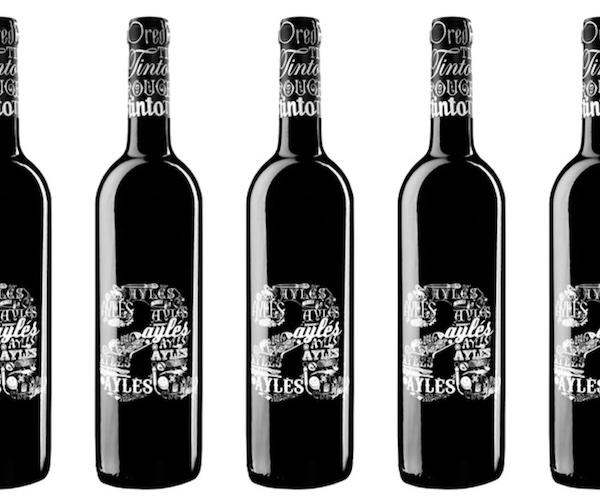The decline in wine consumption is a worrying trend. Wine is going out of style. Millennials and Generation Z don’t drink wine. The headlines are increasingly alarming.
According to the International Organisation of Vine and Wine (OIV), annual global wine consumption has slumped for a third year running, to an estimated 23.4 billion litres. This equates to levels not seen since 2002.
In the USA, after a decade and a half of wine outpacing all other alcoholic beverages, Jon Moramarco of Gomberg Fredrikson & Associates reports a five-year trend of decline in wine sales while craft beer, artisan spirits, and hard seltzer surge.
And our neighbours to the south are not alone in trading in their wine glasses for canned cocktails. Wine Intelligence affirms that, “the UK has lost nearly 4 million monthly drinkers since 2015”.
No and low alcohol beverages are also rising rapidly. Global Data information from the UK states that one-fifth of British adults under 25 are teetotal. A LaTrobe University study from Australia shows that 18–24-year-olds are drinking 20% less on average than they did ten years ago.
While it pains me to admit it, wine is entering dangerous territory; that of an older person’s beverage, the provenance of Prius-driving soccer dads and boomer grannies.
Yes, the figures would have us believe that wine is teetering on the edge of becoming, dare I say it… Uncool?
So how can wine fight back against the aggressive influx of trendier alcohol alternatives? How can wine appeal to the wellness generation? In other words, how can wine regain its cool?
A quick WikiHow search on “how to be cool” reveals these simple steps that, I think, apply as aptly to the wine trade as they do to angst-ridden teens.
1) Don’t be Needy
The golden rule here is to avoid imitation. There is no shame in being inspired by others, but don’t ape their methods. Rather, seek to lead with creativity and innovation.
The growing contingent of ready-to-drink canned beverages responds to a clear-cut desire for convenience and, for certain consumers, lower alcohol options. It also feeds the age-old need of every generation to differentiate themselves from their parents.
Wine in a can, and a multitude of other new packaging formats, is therefore a necessary move. And, for savvy wineries, a golden opportunity. The can, pouch, box, etc. provides more real estate to convey important visual cues and product information to set wine apart.
The departure from traditional back labels is an opportunity to evolve away from the classic, bottled wine formula of generic tasting note + terroir message, and bring more personality into wine messaging.
Canned wine can serve as a new category, but also a great stepping stone, encouraging trial in wine newcomers. Alternative packaging is also a great way to showcase innovation and sustainability. The sleek, flat PET bottles from Garçon Wines are a great case in point.
2) Be Yourself
In Vino Veritas. Since time immemorial, wine has captivated humankind. It was the beverage of choice for the finest minds in Ancient Greece, a defining feature of Roman colonization, and the life’s work of countless monastic orders.
In the (paraphrased) words of the great Ernest Hemingway, “Wine is one of the most civilized things in the world…it offers a greater range for enjoyment and appreciation than, possibly, any other purely sensory thing.”
Indeed, wine has an intangible magic about it, its aromas, structures, and flavours evolving over time in a way that few other beverages can claim. Wine’s story is unique; the limitless combinations of grape, place, vintage, and winemaker mean that no two wines are ever exact replicas.
3) Be Friendly
But while this complexity is an essential part of wine’s singular personality, it also makes for an intimidating drink. Once can hardly blame the casual imbiber for not wanting to memorize producer names, vintage charts, and vineyard maps.
Herein lies the wine marketer’s greatest dilemma. How to make the glorious intricacies of wine more relatable?
In a recent Washington Post article, wine writer Julia Coney, observes that wine is “marketed around tasting notes and points, instead of any sense of fun”. She compares this with the casual lifestyle-oriented approach taken by beer and hard seltzers.
The wine trade has always positioned wine as a social lubricant, the ultimate accompaniment for shared meals and celebrations. But are we conveying this image effectively to younger generations? “We should meet the new wine drinkers, millennials and Generation Z, where they are: on platforms like TikTok and Snapchat, and apps such as Vivino”, says Coney.
For much of its history, says winebusiness.com’s Andrew Adams, wine has had a “Euro-centric focus on food and wine pairing”. Adams explains that today’s consumers have “far more diverse backgrounds and tastes”. Wine pairing suggestions need to reflect this diversity.
In fact, the entire lexicon of wine descriptors and technical terms needs to expanding and demystifying. While I love the beauty of wine’s unique language, if new generations aren’t being taught, or simply don’t want to learn it, what is its future worth?
There will always be wine buffs that appreciate the racy, mineral, fine-grained nuances of wine descriptions. However, to capture the palates of more casual drinkers, or international audiences, language needs to be adapted to resonate with their experience and backgrounds.
A South African winemaker once told me, “When I was studying, we were told that fine French and Italian wines smelled like truffles. I had no idea what a truffle was but didn’t dare say so”. This was a wake up call to me, schooled as I was in the classic art of wine geekery.

Photo credit: Leninscape
4) Be a Good Conversationalist
A good conversationalist knows how to hold attention. They listen as much as they speak, and thus know what their audience wants to hear.
According to fine wine communications expert Juliana Colangelo, the wine world is struggling to listen effectively. In a recent Fortune.com, Colangelo explains that wine messaging is still overly focused on aspirational cues. Younger drinkers “want messages of health and wellness, social good, sustainability, transparency, and experiences” she says.
Here, wine has a winning hand to play. Compared with drinks like ready-to-serve alcohols and de-alcoholised beverages, the production methods of wine are inherently natural. Sulphur levels are plummeting in even the most conventional of wines, and vegan-friendly clarifying agents are becoming the norm.
Wine was an artisanal, craft refreshment long before these terms were popularized by the beer and spirits industries. Its healthful properties, when consumed in moderation, continue to grace medical journals around the globe.
Colangelo also suggests social and mental health benefits, in terms of bringing people together. Canned beverages are an individual pleasure, whereas a bottle of wine is made for sharing. In the wake of our long winter of social distancing, this argument may be the one that resonates loudest.
Finally, across the globe, the wine sector is making impressive strides in terms of sustainability. Yet, when asked how to share this message with wine lovers, most wineries I have queried are at a loss. Certification stickers on wine bottles are helpful, but are they enough?
5) Be confident
Wine is inextricably linked to the land, to a point in time, to a cultural heritage, to families and communities, and to moments of pleasure. It is complex and should unabashedly remain so.
But, most consumers don’t need (or want) a month-by-month accounting of growing season weather patterns. They don’t care to know the exact percentage of new French oak used for ageing. They want the stories and the experiences.
Much like real estate agents stage houses to reflect the desired lifestyle of their target buyer, wine marketers need to re-think their positioning of wine.
Wine as the ultimate natural, artisanal, authentic, healthful, and sustainable of beverages is a compelling message. It simply needs to be delivered in a fun, relatable way, on the platforms where new generations gather. And it needs to be intrinsically linked to the foodie trends that sweep each generation, to regain its central place at the table.
This isn’t to say that traditional wine lovers should be forgotten, or that time-honoured wine messaging should be abandoned. Happily, there is more than enough wine being produced around the globe, in an ever expanding range of styles, to satisfy both camps.








Food. Make food part of the conversation. There is no greater lightbulb moment then when someone tastes the perfectly paired food & wine combination. My partner claimed not to like chardonnay, and also alfredo. I made her a perfect alfredo, poured a rich chard and had her taste it together, now she’s in love and her palate is embracing more and more interesting combinations.
I couldn’t agree more. We seem to have dissociated wine from food in recent years; perhaps as a reaction against overly formal food and wine pairing rules, elitist white table cloth associations with wine, etc. We need to bring the food BACK and make wine lovers realize that all types of food – from sandwiches to caviar – from kimchi to fahitas – can pair with wine, and transform both dish and wine.
Yes exactly & not the esoterica espoused in some publications like my favourite recently for a radish & kumquat salad (& they were serious)